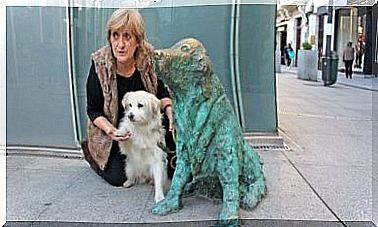Can Animals Sense Fear Through Their Sense Of Smell?

The ability to sense fear through smell is well documented in animals that also have the ability to feel stress and fear.
These species produce chemical warning signals, which can cause changes in behavior through endocrine or immunological variations. These changes can occur either in yourself or in another animal, always of the same species.
So, is it possible to perceive fear through the sense of smell? If we focus on the previous statement, it would not be possible for an animal to perceive the fear of an individual of another species.
However, the behavioral changes an animal suffers from when feeling fear can be detected by other individuals of another species, as long as they know how that species behaves when faced with this emotion.
The olfactory systems
In vertebrate animals – though not all – there are two different olfactory systems. On the one hand, we find the main olfactory system, responsible for the conscious detection of volatile molecules in the air. For example, the smell of a flower, coffee, spices, the body odor of animals, etc.
When we smell these particles directly, we are breathing them. In turn, they bind to olfactory receptors in the nostrils and the information reaches the brain. Emotional states such as fear are generally not thought to be capable of generating odor-laden molecules.
On the other hand, we have the accessory olfactory system, called the vomeronasal organ. This structure is located above the soft palate of the mouth, below the nasal cavity. Here, highly specific odor molecules are detected and information passes through the olfactory bulb.

The olfactory nerves, in both the main and accessory systems, carry information to the limbic system, which is the part of the brain responsible for perception and emotional response. This accessory olfactory system does not detect air molecules. It is designed to “read” non-volatile pheromones messages.
Is it possible to perceive fear through the sense of smell?
The role of the accessory olfactory system in social communication may suggest that fear can be communicated through smell. This is because the detected substances are processed and interpreted in the limbic system, whose primary organ is the amygdala. This structure is responsible for perceiving and responding to fear.
On the other hand, according to studies, communication by pheromones occurs exclusively between members of the same species. This fact makes it impossible for any animal to smell the fear of another species through the accessory olfactory system.
For this reason, it is suggested that the sense of fear an animal may perceive depends more on behavioral patterns than on olfactory signals.
For example, in horses, visual and auditory stimuli are the most important in activating behavioral responses, despite being one of the animals with the best sense of smell.
When a scared person rides a horse, he already knows that he is scared because of his body posture, and it is very likely that the horse will not respond to commands, which are often abrupt in scared people.

Animals can smell their human companions’ fear
In several studies with birds, molluscs or arthropods, it is concluded that fear can manifest itself after the perception of certain chemical substances.
In some species of marine snails, when an individual is attacked and injured, it releases substances to alert members of the same species that they tend to flee or hide. The same goes for several species of crabs.
In one species of bird, although there is still debate over whether or not they are able to smell, it has been found that when puppies are afraid, they vomit a very strong-smelling substance that alerts the parents.
So, animals can sense fear through their sense of smell?
There is a perception of fear among individuals. However, this is not likely to occur through odor, but through specific behaviors.
Other studies have tried to demonstrate the olfactory perception of cortisol, a stress hormone that is released in fearful situations. However, no conclusive results were obtained or that demonstrated the ability to detect cortisol through the sense of smell.









